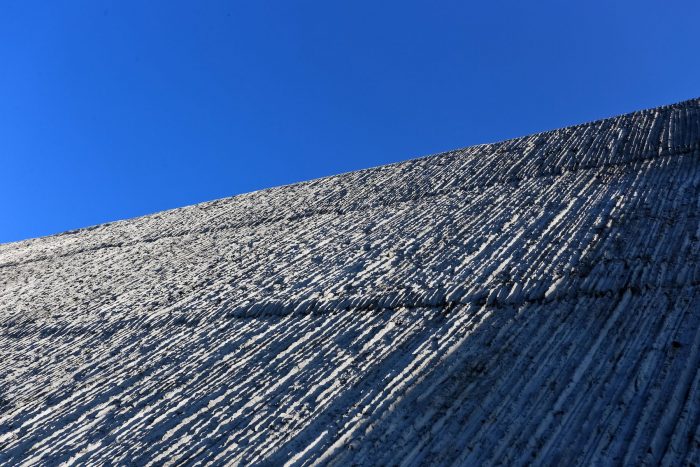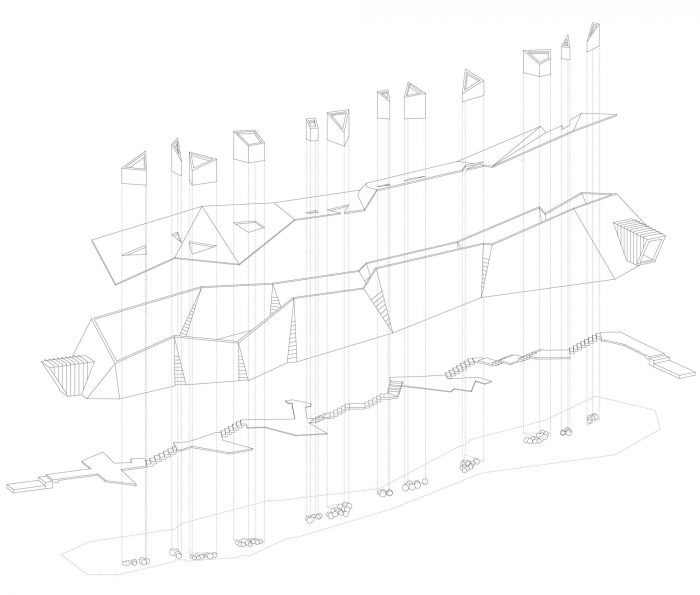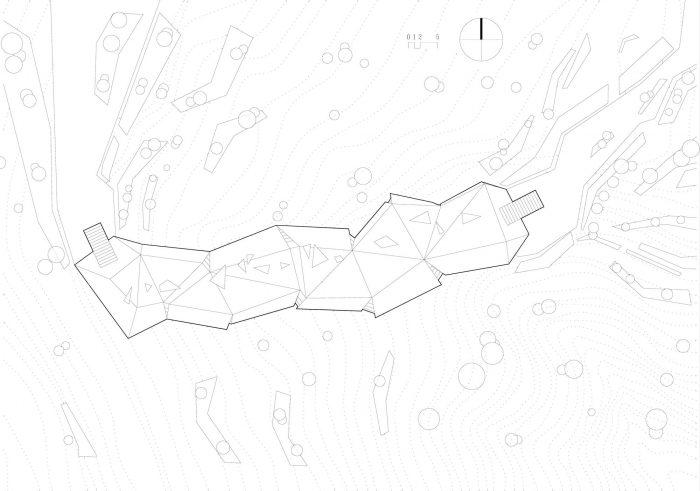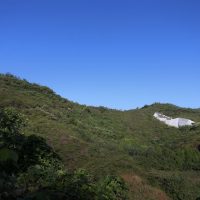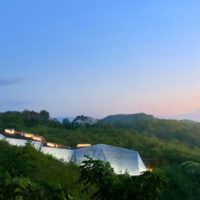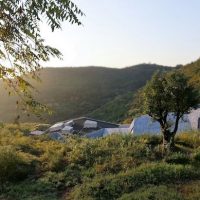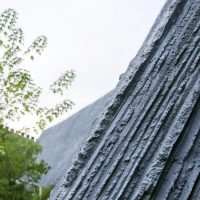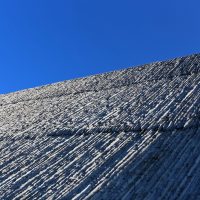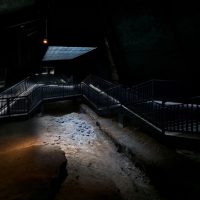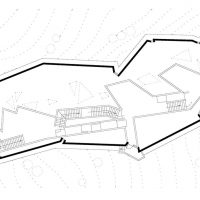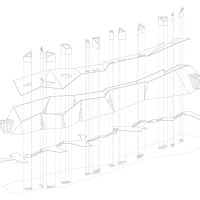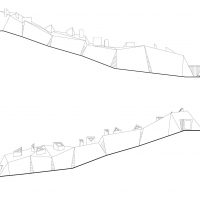The Dinosaur Egg Geological Museum
Yunxian situates in the mountain area in central China, at 32°40′N, 110°37′E. It is in the “Hot-summer and Cold-winter climate zone”. The museum design adopts all local material, local teams and local construction techniques. It strives to create the least disruption with most locally-sourced design input. Cast-in-place concrete, reinforced concrete system, local construction team and local materials are used as much as possible.
The design used locally fast-grown bamboo as concrete molds, it also used old tiles from deserted local earth houses as the 2nd layer of roof. It also helps keep the interior temperature in good condition for hot summer climate region. Without any decoration for the inside and outside facade, only using some chimney-shaped light well in order to draw in natural daylight as spotlights for the dinosaur eggs.
Following the passive design principle, the Museum does not need to use any air condition and other artificial ventilation facilities. Aside from design philosophy, another benefit of the local material and construction team/technique is the economic budget. The site condition including its topography and accessibility is rather complicated, which also results in a building form complicated to construct. Using local material and local construction technique also helps to ensure a modest construction budget while keeping a high-quality contextual design. The Design team also made very frequent trips to the construction site to deliver a quality-controlled project within a friendly budget.
The morphology of the design roots in the spatial distribution of the dinosaur eggs and vertical variation of the on-site topography. The site remained least disturbed, with the minimally- designed walking bridge gently floating above to hug around the site of the eggs, which further determines the direction and form of the architecture that serves as a silent backdrop for the site. It is a building that is modest to the site, honest to the history and respectful to the archaeological excavation.
Old material + New construction technique:
– The fast-growing local bamboo was chosen as a low-budget sustainable material. However the conventional material is used with innovation: the bamboo was used mostly to make molds that provide concrete a unique, rough and textual finishing.
– The old tiles from deserted earth houses nearby were also recycled in an innovative way: They are used to constructed the second layer of the roof. Two layers of roof enable the circulation of air in between, therefore minimizing heat from entering the building during the summer.
– “The Chimneys of Light” are used to provide simple and pure “natural spotlight” for the dinosaur eggs, the only item on exhibition in the entire museum. “The Chimneys of Light” also construct a mysterious atmosphere for the exhibition.
Innovative “wind-transparent but light-blocking” window system, solving conflicts between dark visual indoor environment and well-natural-ventilated exhibition sensual environment. The project collects and piles big rocks from rivers and creeks nearby to protect the foundation of architecture. The unaltered natural grass-field and 800-year-old ancient trees are the main landscape feature, which echoes the natural and minimalistic design principles from the architecture.
Project Info
Architects : Wuhan HUST architecture and urban planning design institute
Location : Qinglong Mountain National Geological Park, China
Year : 2016
Type : Cultural
Photographs : Wuhan HUST
- Courtesy of Wuhan HUST
- Courtesy of Wuhan HUST
- Courtesy of Wuhan HUST
- Courtesy of Wuhan HUST
- Courtesy of Wuhan HUST
- Courtesy of Wuhan HUST
- Master Plan
- Floor Plan
- Axonometric
- Elevation



